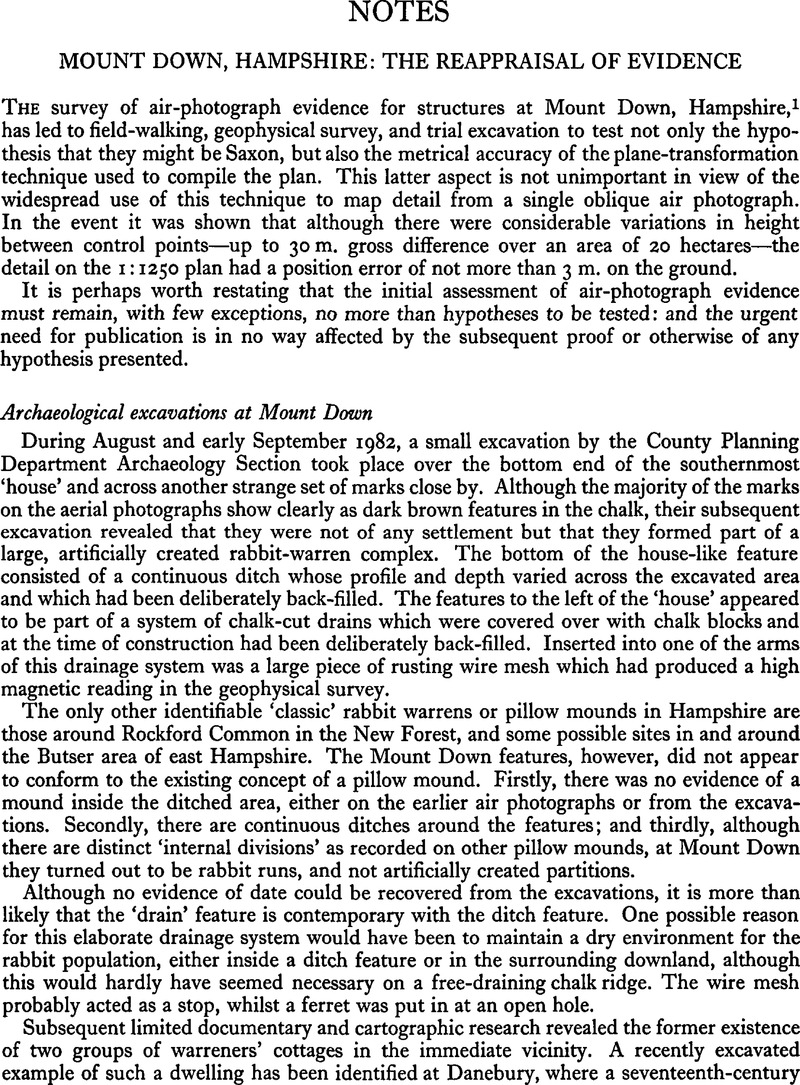No CrossRef data available.
Published online by Cambridge University Press: 29 November 2011

16 Hughes, M. J., Cowell, M. R. and Craddock, P. T., ‘Atomic absorption techniques in archaeology,’ Archaeometry, XVIII (1976), 19–37.CrossRefGoogle Scholar
17 ‘There are hardly a dozen pieces with this type of handle. The key pieces which come from Pompeii and other local sites are as follows:
Louvre, no. 2160, Villa Boscoreale Treasure, ex colln. Tyszkiewicz Heron de Villefosse, Mon. Piot, V (1899), no. 98.Google Scholar
Mus. Arch. Naz. Naples, no. 110861, noted by Villefosse as a parallel for the Boscoreale mirror: L'argenterie et les bijoux d'or du trésor de Boscoreale (1903), p. 161, n. 1. This piece alone has an extra engraved band of palmettes, etc., on the reverse of the disc which links it up well with other early Campanian types of mirror.
Naples, nos. 111123; 112340; 118983; 74924, also numbered 6677.
Antiquarium Pompeii, no. 1137/4, a ‘s o numbered 2480.
Royal Scot. Mus. Edinburgh, no. 1887. 240, no provenance. Gift of Sir Hugh Hume-Campbell 1887 along with other misc. classical antiquities.
Johnstone, M. A., ‘Etruscan Collections in the Royal Scottish Museum Edinburgh’, Studi Etruscki, XI (1937), 395.Google Scholar
There are also a number of miscellaneous handles of uncertain provenance, some now lost. There are a few copies or derived pieces in bronze and base metal from the provinces.’
18 Lloyd-Morgan, G., ‘The antecedents and development of the Roman hand mirror’, Papers in Italian Archaeology, I, ed. Blaze, H., Potter, T. W. and Whitehouse, D. B. (Oxford, 1978), pp. 227–35.Google Scholar
19 Richter, G. M. A., Greek and Etruscan and Roman Bronzes (New York, 1915), esp. p. 288.Google Scholar
20 Atkinson, D., Reports on Excavations at Wroxeter (Oxford, 1942), p. 196.Google Scholar
21 Pliny, Natural History, book xxxiii, esp. chapter xlv.
22 Ibid., xxxiv, xlvii–viii.
23 Hughes, M. J. and Hall, J. A., ‘X-ray fluorescence analysis of late Roman and Sassanian silver plate’, J. Arch. Science, VI (1979), 321–44.CrossRefGoogle Scholar
24 Walker, D. R., The Metrology of the Roman Silver Coinage (Oxford, 1976, 1977, 1978);Google ScholarWalker, D. R., ‘The silver contents of the Roman Republican coinage’, Metallurgy in Numismatics, I, ed. Metcalf, D. M. and Oddy, W. A. (London, 1980), pp. 55–72.Google Scholar
25 Strong, D. E., Greek and Roman Gold and Silver Plate (London, 1966), p. 215.Google Scholar